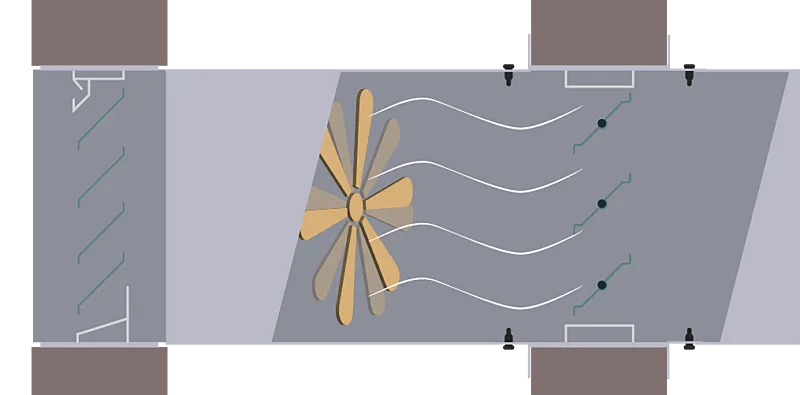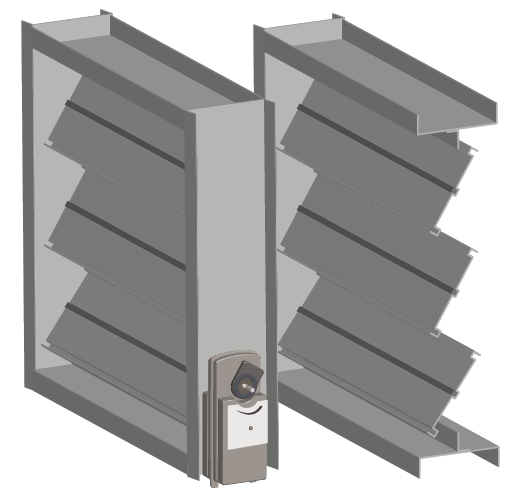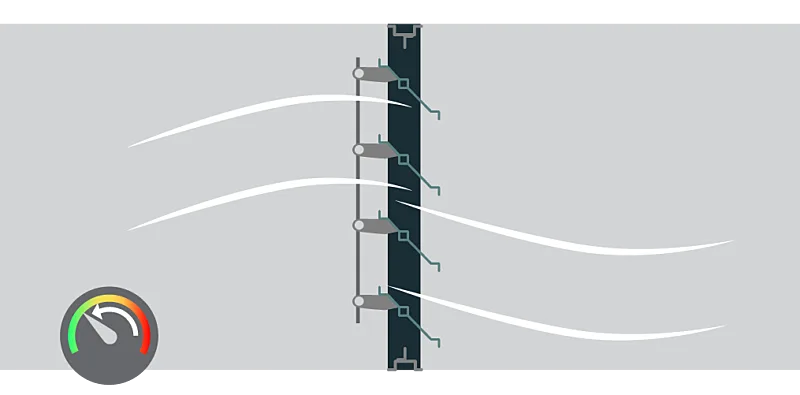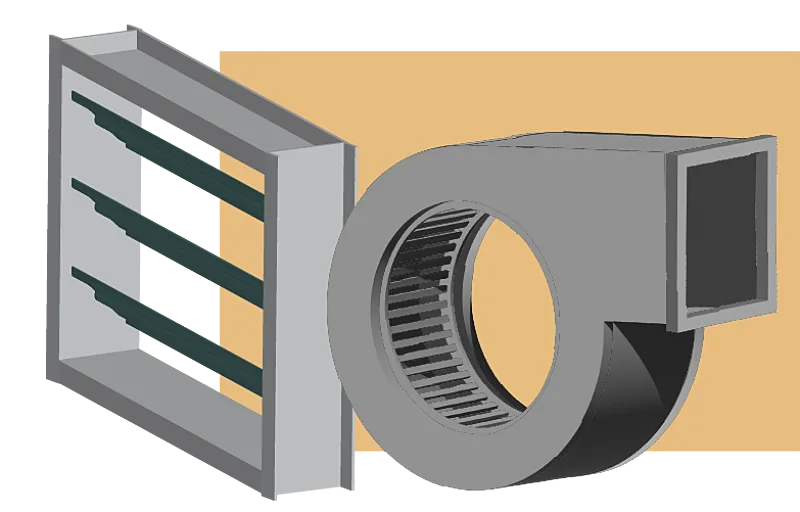Two Types of Air Pressure - Static and Dynamic
Airflow is important in HVAC, but there is more to it than air speed. You will need to manage air pressure to keep your system running smoothly. Efficient airflow is a balancing act.
There are two types of pressure at play in your HVAC system: static pressure and dynamic pressure. To put it simply, dynamic pressure increases relative to the air speed. Static pressure is the pressure caused by objects in the air stream. As air flows around an object, parts of the stream will deflect back on itself and generate static pressure. This occurs with everything in the stream, including important components like fans and dampers.

The dynamic pressure of the air stream should be greater than the static pressure in the duct to maintain airflow at a particular velocity. An increase in static pressure will require an increase in dynamic pressure to maintain the same velocity. We call this interaction a pressure differential, or differential pressure. You can increase the speed of your system fans to increase the speed and pressure, which also increases static pressure.
Now we need to consider the maximum differential pressure of the duct and the nearby dampers. Every duct and damper will have a maximum differential pressure. Dampers can safely operate in the airstream if the air pressure in the duct stays below this limit. If pressures exceed this limit, then the damper may refuse to open and close, or may suffer damage while trying to operate. The same is true of ductwork. You need to manage pressure throughout your system, so that you have the airflow without exceeding the maximum differential pressure of the duct and its dampers. There are dampers that can help you achieve balance.

A modulating actuator can hold additional blade angles.
Modulating Dampers and Pressure Relief Dampers
Control dampers can help balance air pressure in your system with modulating actuators. In “Motorized Dampers for HVAC”, we cover how standard actuators open dampers or close them. A modulating actuator can hold the blades at set angle between open and closed. The damper can adjust the static pressure of the air stream by maintaining a set blade angle or by rotating the blades to fully open.
Greater blade angles will increase the static pressure on the air stream. This can work in areas of the system with excess dynamic pressure. Certain modulating actuators can hold several blade angles, so that technicians can adjust the system pressure on the fly. Remember to check the damper’s maximum differential pressure before adding a modulating actuator. Make sure the damper will work for its intended use.

Pressure relief dampers are specialized backdraft dampers designed to release excess pressure in the system. Backdraft dampers use a unique blade design with off-center blade axles that open when air pushes on the blade from a specific direction. They close on their own when airflow stops, or if air begins flowing in the opposite direction. Pressure relief dampers open when air pressure inside the duct reaches a predetermined point. These dampers typically lead out of the duct system so that the exhaust doesn’t affect other areas.
By configuring the damper’s counterweight, designers can set the damper to open when the differential pressure approaches the maximum pressure of the duct. In this way, pressure relief dampers release the pressure inside the duct and lower it to a safe level. The damper will close once the pressure inside falls below the threshold. Pressure relief dampers are an excellent addition for areas where pressure build up will be a concern. They can help you keep your system safe from pressure overload.
Fan Outlet Dampers
Fan outlet dampers are specialized modulating dampers designed for modulating the outlet of centrifugal fan assemblies. Centrifugal fans are excellent for applications that need concentrated airflow directed at a specific point or angle. Technicians can control the speed of the fans to adjust airflow, but a fan outlet damper provides additional control over the pressure. Air will be moving fast at the source, and the outlet will be highly concentrated compared to other fans. This means there will also be a lot of air pressure as air moves through the outlet.

These dampers are built for intense airflow. For example, consider the FO-411 by AWV. Where a typical control damper is rated for 2 in. w.g. of differential pressure, the FO-411 is rated for 25 in. w.g. of differential pressure. Fan outlet dampers are built for heavy-duty air modulation. However, they fulfill a specific niche in your system. They are designed and built for modulating the outlet of centrifugal fans. If your project has these fans, then consider adding outlet dampers for additional control.
Managing air pressure does more than keep your system safe. It can also improve the system’s efficiency. System fans will need less power to push air through the ductwork when the pressure is balanced. Keep this in mind when you design your system. A balanced HVAC system is a safe and efficient system.
AWV and Dampers
Starting a new project and need airflow dampers? AWV has you covered. Browse our full catalog of dampers online, including volume control dampers, pressure relief dampers, and more. AWV builds dampers to fit your project’s needs. Contact AWV today. Let’s work together on building your next HVAC project.





